Deep Heat Therapy
What is Deep heat therapy?
Deep heat therapy is a part of thermotherapy. Thermotherapy contains the application of heat or cold (cryotherapy) to alter the intra-articular, cutaneous, and core temperature of soft tissue(muscles and ligaments) to enhance the symptoms of particular needs. Thermotherapy is a valid adjunct for the remedy of musculoskeletal injuries and soft tissue damage.
Heat as a healing intervention reduces pain in joints and muscles and they have opposite outcomes on blood flow, tissue metabolism, edema, inflammation, and connective tissue extensibility. Thermotherapy is used in rehabilitation skills or as a home remedy.
What are the goals of Deep heat therapy?
Thermotherapy aims to convert damaged tissue temperature to induce a preferred biological reaction. The bulk of thermotherapy is arranged to provide thermal therapy to a significant tissue volume with minimal effect on surrounding tissues over the affected part.
By boosting the temperature of the affected region/soft tissue, the blood flow boosts by vasodilatation. The tissue extensibility and metabolic rate will also boost. Heat raises oxygen uptake and accelerates tissue recovery, it also improves the movement of harmful enzymes, for example, collagenase, and improves the catabolic rate.
What is the application of Deep heat therapy?
Heat can be generated in the deeper tissues via electrotherapy for example ultrasound, shockwave, and infrared radiation. Exercise in warm water, generally called aqua therapy, hydrotherapy, or balneotherapy, is a famous and effective treatment for pain relief for many individuals with aching neurologic and musculoskeletal illnesses. The warmth of the water can obstruct nociception by functioning on thermal receptors and mechanoreceptors, therefore exploiting spinal segmental pain mechanisms. It offers favorable effects on cutaneous barrier homeostasis and anti-inflammatory movement. In addition, the heat can improve blood flow and muscle relaxation. The hydrostatic impact may also alleviate pain by decreasing peripheral edema and by draining sympathetic nervous system(SNS) movement.
Mechanism of action
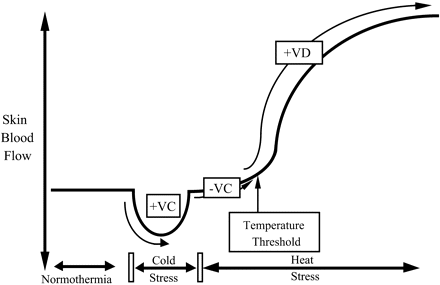
Skin blood flow is regulated by two components of the sympathetic nervous system(SNS) a noradrenergic vasoconstrictor system and a cholinergic active vasodilator system. These double sympathetic neural managing mechanisms affect the main elements of thermoregulatory responses on most of the surface of the human body.
While the duration of hypothermia, collapsing core, and skin temperatures conduct spontaneous proliferation in sympathetic active vasoconstrictor nerve movement to facilitate skin blood flow and preserve body heat. While the duration of heat stress, improving core and skin temperatures conducts spontaneous proliferation in sympathetic active vasodilator nerve movement to boost skin blood flow.
The impact of heat on pain is judged by heat–sensitive calcium channels. These channels react to heat by raising intracellular calcium. This induces action potentials that raise the impulse of sensory nerves and force the sensation of heat in the brain. These channels are the domain of a family of receptors called TRPV receptors. TRPV1 and TRPV2 channels are liable to noxious heat, while TRPV4 channels are liable to normal physiological heat. Their considerable imperative sites permit several aspects to trigger these channels. Once activated, they can even hamper the movement of purine pain receptors. These receptors (P2X2 and P2Y2 receptors), are pain receptors and are found in the peripheral small nerve endings. Such as, with peripheral pain, heat can instantly hamper pain. Regardless, when pain is arising from deep tissue, heat produces peripheral pain receptors which can modify what has been termed gating in the spinal cord and decrease deep pain.
Earlier studies have indicated that temperature can impact the interaction between Ca2+ and Na+ in neural cells. They recorded an elaboration in both pain threshold (prethreshold) and pain tolerance (pretolerance) with the use of cold (cryotherapy).
Increased external tissue temperature involves the discharge of chemical mediators, for example, histamine and prostaglandins, which result in vasodilation. These vasodilatory mechanisms don’t especially impact blood flow in skeletal muscle since skeletal muscle blood flow is laboriously controlled by other physiologic and metabolic factors. Exercise is the most suitable norm to improve blood flow to skeletal muscle.
What Are the Deep Heating Modalities?
In this kind of treatment, the deepness of penetration of warmth is more than 2cm.
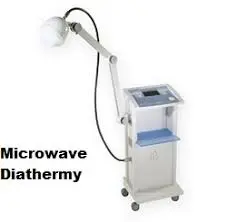
Microwaves are electromagnetic radiation and will help supply brief pulses of high–intensity microwaves. It assists enhance soft tissue permeability, pain threshold, collagen synthesis, and scar tissue resolution, alleviating joint stickings. It is also beneficial in wound healing and scar remodeling.
Shortwave Diathermy:
SWD delivers deeper tissue heating for up to 30–50 mm depth via an electromagnetic installation by high-frequency currents. It can never be utilized in acute injuries. This is perfect for deeper chronic pain of joints and helps to enhance the engagement of white blood cells(WBC) and antibodies in the affected area. It assists decrease deeper localized pains because of neuromuscular pathology.
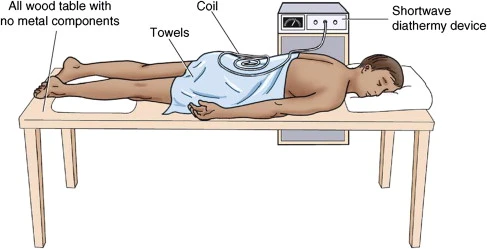
LASER Therapy:
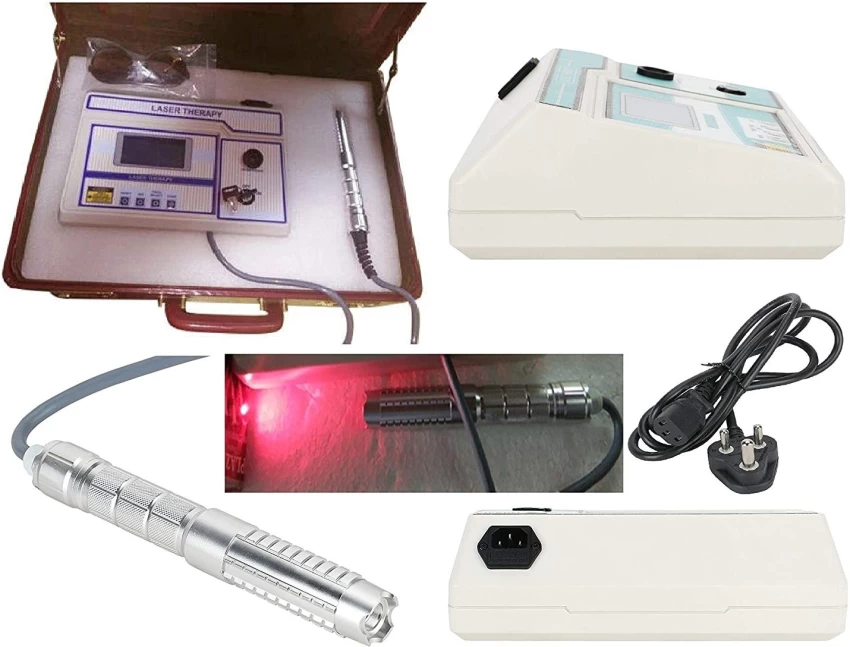
Low-frequency light waves construct photochemical responses within the soft tissue cells. It assists alleviate acute and chronic pain because of muscular and neuropathic injuries.
Ultrasound is a deep heating mechanism typically utilized in restoration. Deep heating mechanisms are adept at inducing improved temperatures in soft tissues up to 3–5 cm deep. Ultrasound can be utilized as a pulsed wave, in which the intensity is occasionally interrupted. Ultrasound constructs improved extensibility of collagen fibers, reduced joint immobility, reduced muscle spasm, pain modulation, improved blood circulation, and a mild inflammatory reaction.
- Indications: It may be utilized for soft tissue shortening in conditions such as joint contractures and scarring. Ultrasound can be utilized in subacute & chronic inflammatory illnesses. It can be operated in situations such as muscle spasms, trigger areas, muscle guarding, and neuroma.
- Contraindications: Ultrasound should be sidestepped in the following conditions:
- Patients who have inadequate arterial blood circulation.
- Wounds that have involved bleeding.
- Avoided in regions such as the eyes & spinal cord as it may create cavitation.
- It should be avoided in pregnant ladies.

What are the Benefits of Deep heat therapy?
Proof wrapping the advantage of heat therapy is primarily confined to the decrease of pain in illnesses such as rheumatoid arthritis, osteoarthritis, low back pain, and primary dysmenorrhea. Regardless, the usage of those modalities can reduce the effectiveness of other therapies for example therapeutic exercises by facilitating nociceptive signals and decreasing joint immobility (improved ROM).
As for recovery effects, the new guidelines recommend avoiding the usage of thermotherapy while the phases of recovery (see Peace and Love Principle). There are 4 stages of the recovery process: the hemostasis phase, the inflammatory phase, the proliferation phase, and the remodeling phase. These stages maintain their aims and should only be modified in case of abnormal or intense symptoms.
What are the Physiological effects of Deep heat therapy?
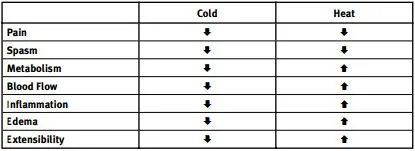
Many of the regional physiological effects of heat and cold have been analyzed entirely. For example, heat raises the skin and joint temperature, enhances blood flow and muscle relaxation, and reduces joint immobility.
Deep heating is supposed to facilitate nerve sensitivity, boost blood flow, improve tissue metabolism, reduce muscle spindle sensitivity to stretch, induce muscle relaxation, and improve flexibility. Heat encourages the cutaneous thermoreceptors that are bonded to the cutaneous blood vessels, inducing the discharge of bradykinin which calms the soft muscle walls resulting in vasodilation. Muscle relaxation happens as an outcome of a reduced release rate of the gamma efferents, hence decreasing the threshold of the muscle spindles and rising afferent movement. There is even a drop in the release of the alpha motor neuron to the extrafusal muscle fiber, resulting in muscle relaxation and a reduction in muscle tone.
Precautions and Contraindications of Deep heat therapy
Contraindications are surrounding the usage of thermotherapy, as well as precautions to be taken with different patients, for example, children and older people due to exhausted temperature managing capabilities, and people with poor sensations.
- Numbness of area being heated
- Heart conditions (heart failure, coronary artery disease)
- Acute inflammations
- Acute traumas/injuries
- Allergies to heat
- Open wound (paraffin)
Effectiveness of Deep heat therapy
There are still disclaimers on whether the usage of thermotherapy is useful or not. Regardless, it is still operated worldwide to decrease critical pain and enhance mobility – where most of its proof stands.
While there is reasonable proof that exercise reduces pain, enhances function, and is cost-effective, proof supporting the usage of non-exercise physio-therapeutic mediate is much weaker. There is some asset for the effectiveness of thermotherapy, transcutaneous electrical neuromuscular stimulation (TENS), and massage, but there is small proof to reinforce the effectiveness of electrotherapy, acupuncture, or manual therapy.
For knee osteoarthritis (OA), ice massage is noted to enhance joint mobility, pain, and function; ice packs can decrease swelling and enhance movement but may not alleviate pain. In rheumatoid arthritis (RA), heat or cold packs are noted to not impact edema, pain, movement, strength, or function.
Cost-effectiveness
In spite of, conflicting proof, the easy format of thermotherapy is widely advised for many musculoskeletal illnesses because it is a secure, useful, easy-to-apply, and well-liked treatment based on anecdotal reports, expert thought, and patient choices. Interventions that may be self-administered (thermotherapy, TENS, massage) are additionally likely to be cost-effective and less punishing and thus much more adorable long-term control alternatives. Tough thermal therapeutic modalities for heating deeper tissues need special tools, and control and need to be given by a professional therapist, making them less available, more costly, and higher risk.
FAQ
What is the use of deep heat therapy?
Deep heat therapy is a remedy for injury and pain. The heat calms the blood vessels and muscles, which is beneficial to treat muscle spasms and obtains more blood to the damaged region. It may assist your body in recovery and may reduce pain.
What is the advantage of deep heat therapy?
Deep heat therapy induces penetrating heat in hurting, injured, and sore muscle regions. Deep heat therapy or heat rub can be applied before and after exercise and includes elements that alleviate pain by providing heat. Heat therapy assists to boost blood circulation to calm and settle the injured region. Utilize heat therapy just on your skin with appropriate precautions.
Who can’t uses deep heat therapy?
Kids and teenagers younger than 18 yr shouldn’t use this therapy if they have flu, chickenpox, or any undiagnosed sickness and if they have just obtained a vaccine. In these circumstances, the use of aspirin or aspirin-like medicine boosts the chance of Reye’s syndrome, an irregular but severe condition.
Is Deep heat therapy good or bad?
Deep heat therapy boosts blood circulation to the involved region, delivering oxygen and nutrients to assist the muscle recuperation procedure and sustain relaxed muscles to correct motion. Deep heat therapy for aches and pains in muscles and joints is well-established and instructed by physiotherapists.
What are the benefits of heat therapy?
Deep heat therapy is understood to accelerate recuperation and healing, and some physicians instruct it to their patients who suffering from rheumatism, damage, chronic pain, and osteoarthritis. Some investigations recommend that deep heat therapy may also be a useful cure in the treatment of benign depression, anorexia, and appetite loss.

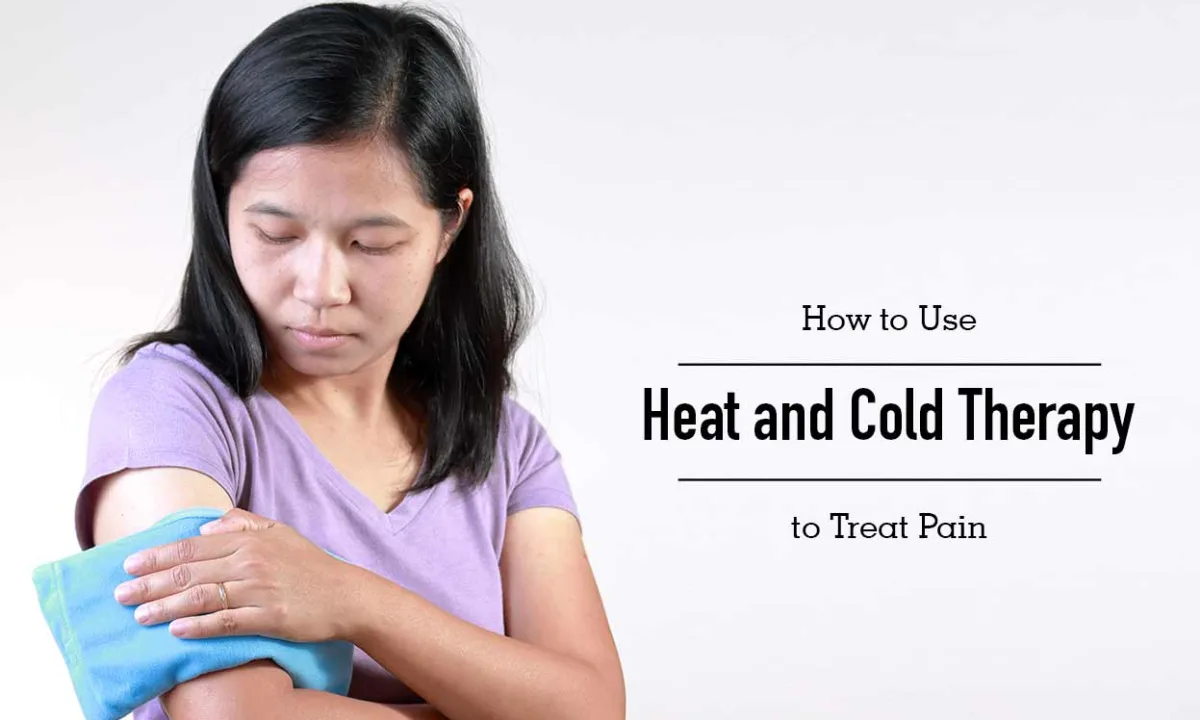

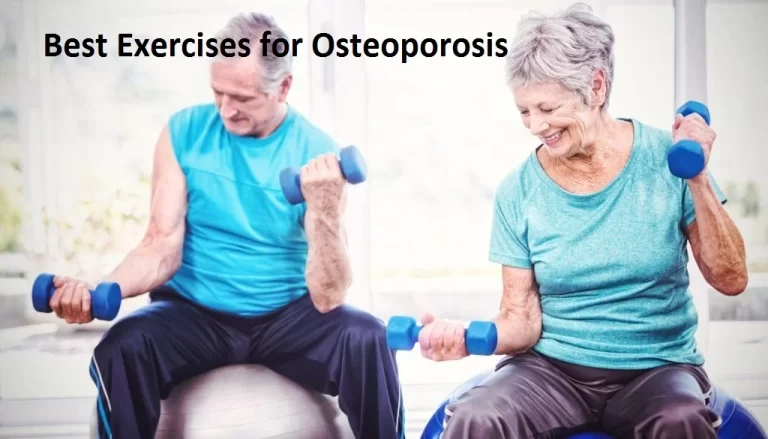
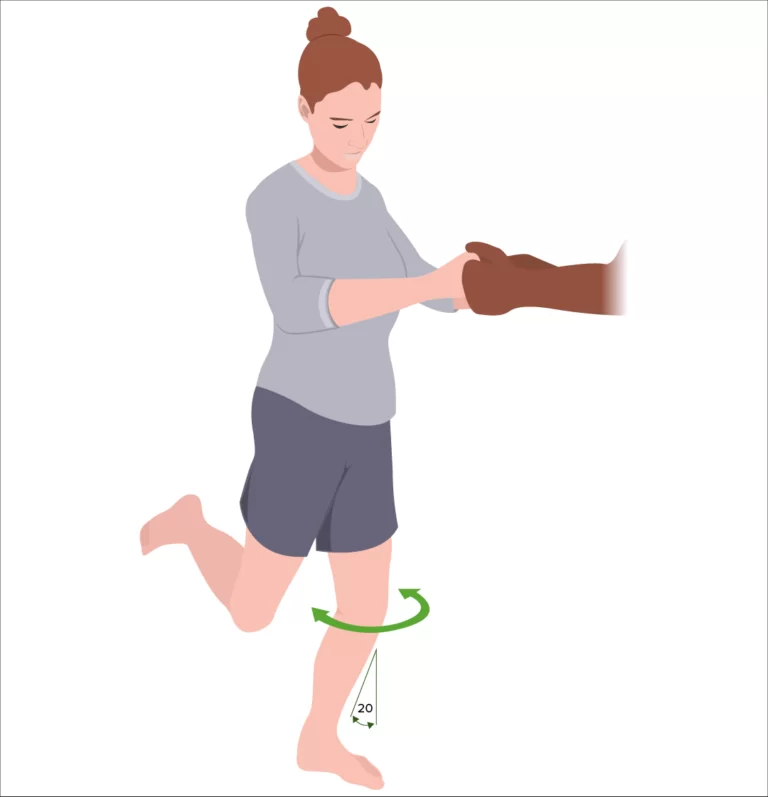
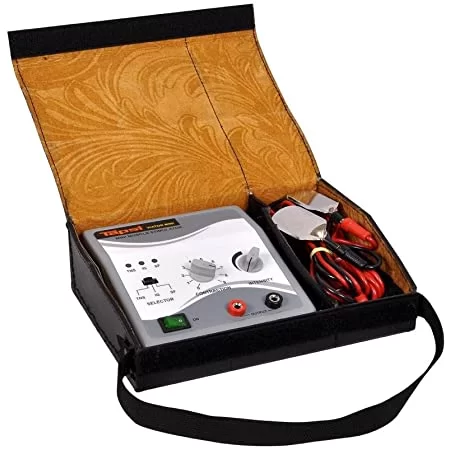


10 Comments